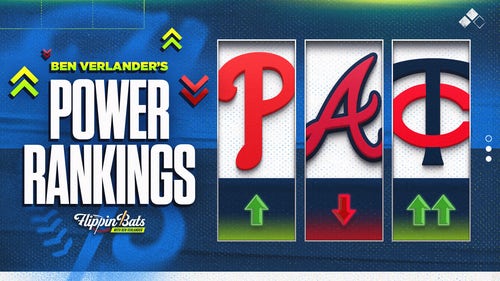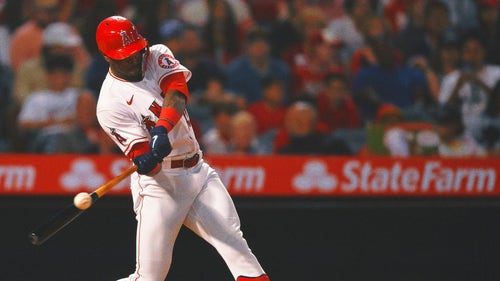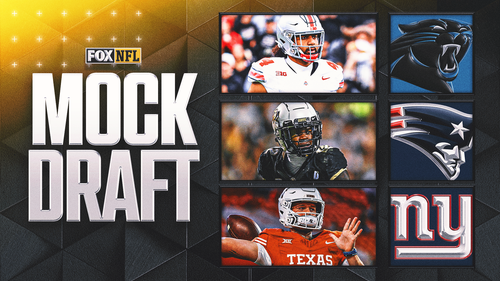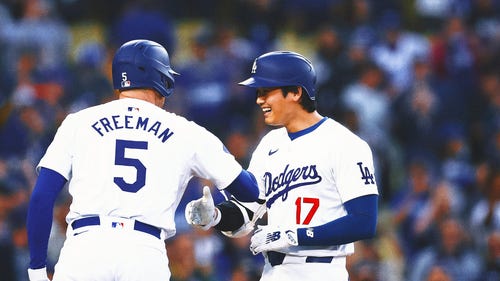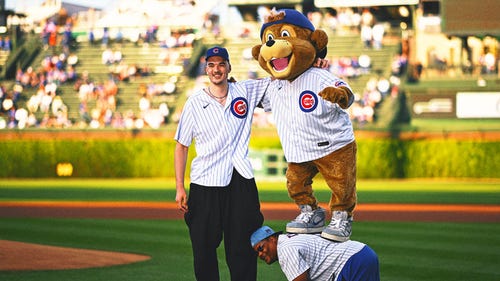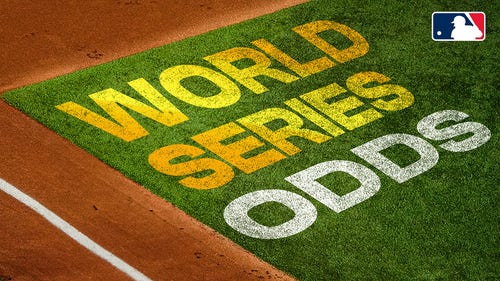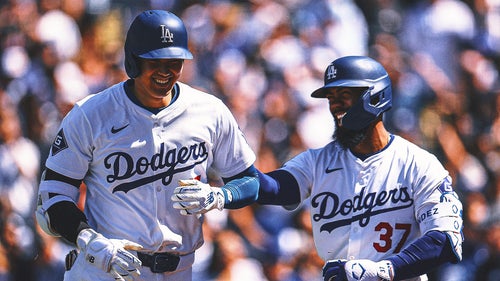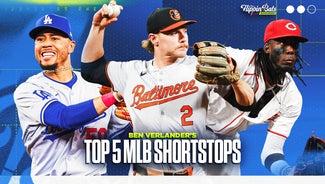
How Twins' focus on strikeouts could prevent them from striking out again in playoffs
"I like everything about facts. And I like talking about numbers."
Those words came from Minnesota right-hander Pablo López just a few days before his club clinched the American League Central crown in September. So, let's start with some facts and numbers.
Twins pitchers' 25.8% strikeout rate in 2023 led all 30 MLB teams. Not the perpetual pitching factory Rays, who came in a close second. Not the perennial powerhouse Astros or Dodgers or Braves. Not the traditionally terrific staff in Milwaukee, or the talented group of young arms in Seattle or Miami. Minnesota: Numero uno.
This isn't just a staggering improvement from the 22.1% rate the Twins posted a year ago (19th-best). It's a borderline shocking — yet welcome — departure from what had been a decade-plus-long lack of organizational interest in pursuing punchouts.
During their run of four division titles in five years from 2002 to 2006, Minnesota hurlers struck out more than their share, peaking as high as second in 2006 thanks to ace Johan Santana and a 22-year-old rookie southpaw named Francisco Liriano.
In the decade that followed, however, the Twins leaned heavily into a contact-heavy approach on the mound just as strikeouts started to increase dramatically across baseball. From 2008 to 2017, Twins pitching staffs never ranked higher than 23rd league-wide in strikeout rate, and finished an astonishing 30th in five straight seasons from 2011 to 2015. Even when Minnesota returned to the postseason following a seven-year drought in 2017, the staff ranked 29th.
It is in this context that this year's standout Twins staff — led in part by the acquisition and further blossoming of López — shines especially bright heading into its wild-card series against the Blue Jays, which begins Tuesday in Minnesota.
López's stated affinity for the cold, calculated truth came in reference to how quickly he embraced Minnesota's analytical approach upon arriving via trade from Miami this past offseason. Having delivered three consecutive above-average seasons with the Marlins, López wasn't in need of any sort of dramatic overhaul of his arsenal or delivery. Rather, he was excited in spring training to find out just how much better he could be with the right tweaks to his repertoire.
"We started having those meetings, and they showed me all the data," López said. "I like movement plots. I like, ‘If you start using X amount of inches to this side of the plate that will help you with X’. I was all about that."
López's signature pitch has long been his changeup, which he deployed over 30% of the time — and nearly as much as his fastball — over the past few seasons. This year, though, he's cut down on the usage of his best pitch to closer to 20% and introduced a mid-80s sweeper that offers markedly different movement than his low-80s curveball, which he continued to utilize a decent amount. This gave López five pitches to attack with and made his trademark changeup much more difficult for opposing hitters to target.
The evolution of his pitch mix — combined with a tick more velocity that had his heater averaging a career-best 95 mph — has helped López level up his entire arsenal on the mound, and the results followed immediately. López had never struck out eight-plus batters in three consecutive games until this year when he did it in the first three starts of the season.
"It stood out for me because it was more than usual," López said. "I could tell that I was giving myself more options because of the way I was mixing the pitches and then using all parts of the plate."
López finished the regular season with a career-high 234 strikeouts, tied with NL Cy Young front-runner Blake Snell for third in baseball. The uptick in whiffs also came without sacrificing his already-plus command; he actually walked fewer batters in 194 innings this year (48) than he did in 180 innings a year ago (53).
While his breakout has been a massive developmental win for both the player and team, López's stellar performance had plenty of company in the Twins rotation. He joined a pitching staff fronted by two other relatively recent trade acquisitions in right-handers Sonny Gray and Joe Ryan: Gray an accomplished veteran entering his second year with the Twins, and Ryan, a 26-year-old righty entering his second year in the big leagues.
An All-Star for the third time, Gray has been simply marvelous in his age-33 season and has impressed younger teammates and fellow veterans alike all summer long.
"He's so locked in this year," right-hander Bailey Ober said. "A man on a mission, really. And he's the guy that all of the guys in here look up to."
López added: "The level of focus he puts in his bullpens, it's like nothing I've ever seen."
Gray's 2.79 ERA ranks third in the majors behind probable Cy Young winners Snell and Gerrit Cole. Aiding in his tremendous run prevention has been a remarkable ability to keep the ball in the ballpark, as he's allowed just eight homers across 184 frames and 32 starts. That 0.39 HR/9 ranks comfortably ahead of all qualified starters (Justin Steele is second at 0.73).
"I've been one of the biggest Sonny fans since he debuted with Oakland," said former Cy Young Award winner Dallas Keuchel, who signed with Minnesota in June. "We had a lot of battles."
Despite only being his teammate for a few months, Keuchel knows Gray as well as nearly anyone in the Minnesota clubhouse having competed against him plenty earlier in their careers. They even overlapped for one year in the Southeastern Conference, while Keuchel was a junior at Arkansas and Gray was a freshman at Vanderbilt, and then for five seasons in the AL West as Keuchel starred for the Astros and Gray headlined the A's staff.
As for tweaks Gray has made in his 11th MLB season to allow for such effectiveness, he too has relied more on a sweeper — just like López has — while also adding a high-80s cutter to the mix. Keuchel quickly noticed upon joining the Twins that Gray wasn't quite as fastball-centric as he was in his Oakland days — he used to throw about 60% heaters between his four-seam and two-seam, a number that is down to 43% this year — but his ultra-deep selection of weapons allows for a variety of attack plans in any given outing.
"I've gotten to see his preparation and the mental side of things," Keuchel said. "He's always talking to himself about the scouting reports. As a starting pitcher, you're out there, hopefully, 6-7 innings, you have to memorize nine hitters, what guys can do, what guys can't do.
"He does a great job. It's what I figured it would be like when I came over here."
While Gray and López are the more known commodities, the depth beyond them — including an underrated bullpen unit headlined by MLB's hardest thrower in closer Jhoan Duran — is what really separates this pitching staff.
Ryan had issues with the long ball — the three he allowed in his final regular-season start at Coors Field to give him 32 for the year — that inflated his ERA to a pedestrian 4.51. But the peripherals suggest he was right in line with his rotation mates in terms of dominating the zone. His 24.3% K-BB% ranked second in MLB to Spencer Strider and narrowly ahead of López's 23.2% mark. Ryan also pitched far better at home this year, which is good news should he be called upon for a potential Game 3 start Thursday versus Toronto.
With Tyler Mahle needing Tommy John surgery in early May and Kenta Maeda missing a good chunk of time with a triceps strain, Ober could be in line to start a division series game should Minnesota advance. The former 12th-round pick and lone homegrown member of the pitching staff asserted himself as a crucial contributor in the middle months of the season. His 6-foot-9 frame enables elite extension and deception that helps compensate for below-average velocity. And, like the rest of the staff, Ober throws a ton of strikes, enabling an impressive 4.72 strikeout-to-walk ratio that doesn't lag much behind his more heralded teammates.
"Between starts we are very attentive to what ourselves are doing, but also what everyone else is doing on the staff," Ober said. "I feel like we've been really in sync with being able to talk real stuff without pissing someone off."
Twins pitchers note they have benefited from consistent communication behind the scenes that expands beyond pitching coach Pete Maki and the rest of the coaching staff.
"I feel like in the past, it was more of a coach-player relationship, doing that type of conversation," Ober explained. "But this year, it's been huge; we have the coach-player, and then we also have the player-to-player conversations, which can go in a little bit more detail."
López added: "I love watching my teammates throw bullpens because one of the coolest things I get to witness is when it translates to the game. When I see someone working on put-away pitches, put-away counts and you see their entire bullpen is like throwing 0-2 pitches. And then they go into the game and they start putting guys away."
López will start Game 1 on Tuesday against the Jays looking to help snap Minnesota's historic 18-game postseason losing streak. Fittingly, the last Twins pitcher to win a playoff game is also the pitcher López grew up idolizing in Venezuela: Santana. His seven scoreless innings at Yankee Stadium in Game 1 of the 2004 ALDS were quite the encore for what turned out to be the first of two Cy Young campaigns. But Minnesota dropped the following three games, the start of a losing streak that still haunts the Twin Cities nearly two decades later.
Since that Game 1 victory, 12 pitchers (including Santana) have made postseason starts for Minnesota, many of them strongly reflecting the pitch-to-contact ethos of previous Twins eras. The list includes the likes of Brad Radke, Carlos Silva, Nick Blackburn, Carl Pavano and Brian Duensing, pitchers whose whiff-averse approaches found varying levels of success over the course of 162 games yet struggled to translate to the postseason stage.
The individual outings alone haven't been exclusively bad — the bullpen has blundered on numerous occasions, and the offense has sometimes gone silent. José Berríos, Jake Odorizzi and Maeda have pitched well for the Twins in recent Octobers with a more strikeout-centric attack, despite the team continuing to come up short collectively. Still, the majority of Twins postseason teams this century have lacked a pitching staff fit for a deep run — let alone a series victory — making their early exits almost expected.
Not this time. Two of the best starters in the American League are rested and lined up exactly as the team could have hoped. Now, López, Gray and all the talented pitchers whose performances have contributed to the Twins' season-long success just need to show up when it matters most. They'll square off against another excellent pitching staff in the Blue Jays, who also boast significant star power on offense.
As strong as the Twins staff looks on paper, nothing is certain in October. This franchise knows that as well as any. Most teams can start dreaming of a title once they clinch a postseason berth, knowing that anything can happen if they can just get into the playoff field.
For Minnesota, the first thought is that first win.
Jordan Shusterman is half of @CespedesBBQ and a baseball writer for FOX Sports. He has covered baseball for his entire adult life, most notably for MLB.com, DAZN and The Ringer. He's a Mariners fan living in the Eastern Time Zone, which means he loves a good 10 p.m. first pitch. You can follow him on Twitter @j_shusterman_.






































































































































